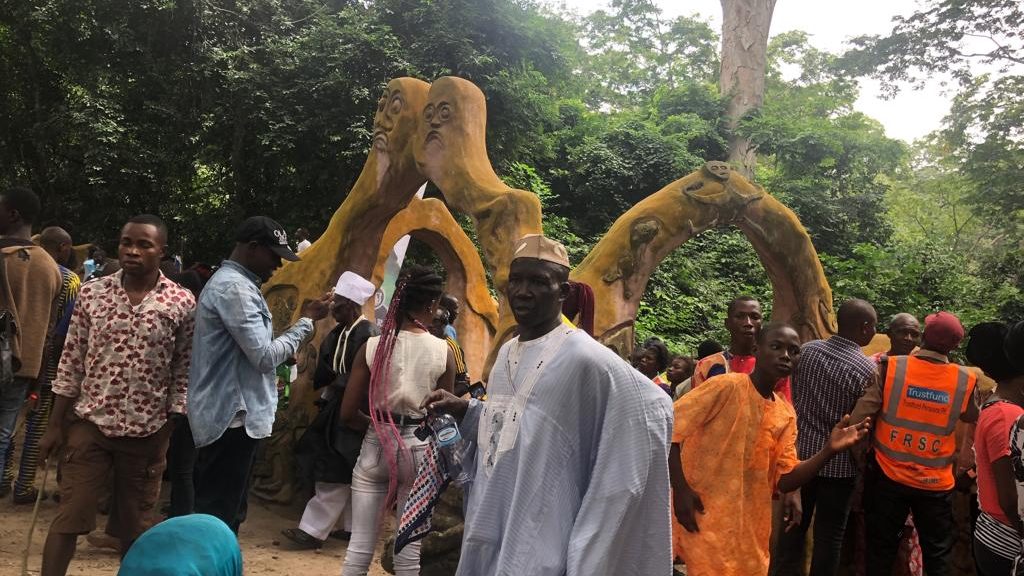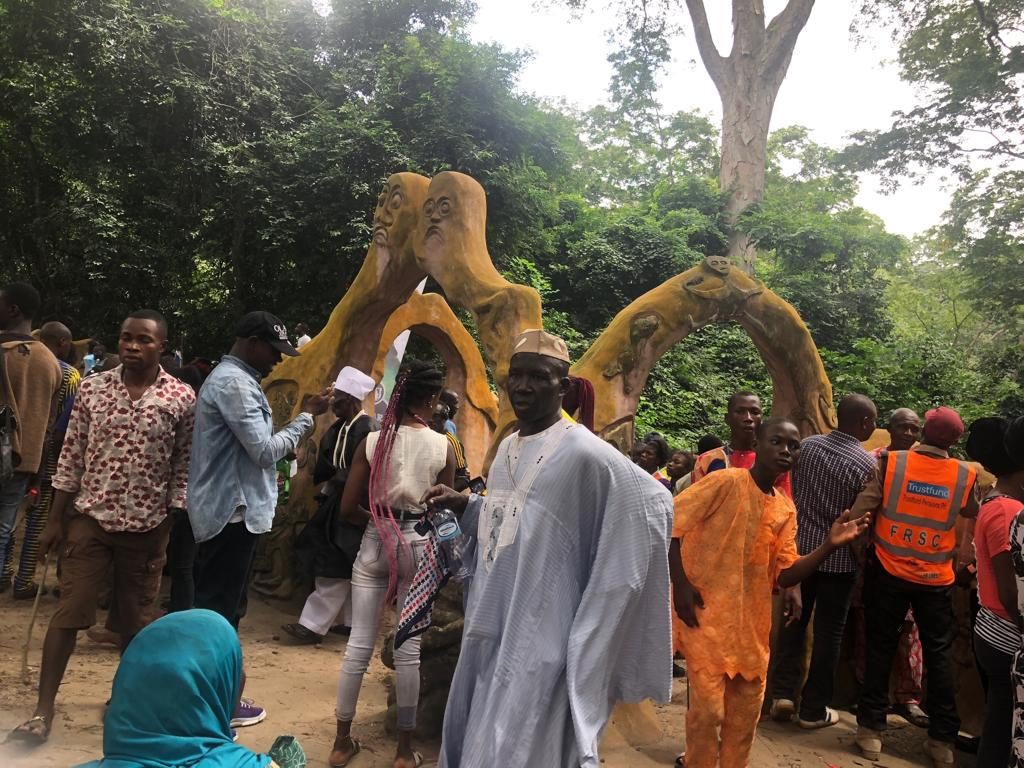The Osun Osogbo festival is a yearly ritual marked by followers of Osun, the River Goddess. The festival runs for two weeks every August which begins with the Iwopopo – meant to cleanse the town of evil.
The Osun goddess revered and referred to as Yeye Osun as far back as 700 years ago as the folklore has it appeared to the leader of a group of settlers, Olutimehin when he settled on the river bank to escape famine and urged him to move farther north – (the recent time Osogbo).
The River Goddess in return promised to protect the group and make their women fruitful if an annual sacrifice was offered to her in return. Hence, the yearly sacrifices. The yearly sacrifice has over the years evolved to more than what it used to be with tourists from all over the globe coming to Osun to pay homage to the goddess and in turn earn her favour.
The festival gained immense popularity during the period when Susanne Wenger, an Austrian served as an in house priestess in the Shrine. She rebuilt the customary shrines and groves until she passed away.
The festival has several phases which we will iterate below
Iwopopo – Traditional Cleansing of the town from evil and 3 days after the next phase commences
Ina Olujumerindinlogun – a 600-year-old lamp, a 16-point lamp is lighted. An ancestral ritual carried out 3 days after the town cleanse
Iboriade – this is an intercessory stage where the crowns of all the previous Ataojas are assembled for blessings by the current Ataoja (Ataoja is synonymous with King), the current Yeye Osun, The Arugba – calabash carrier and a committee of priestesses
Arugba – The role of the Carrier is very symbolic as she bears the calabash on her head which contains sacrifice for the goddess. She has to be a virgin and is revered among the faithfuls as they cast their burdens on her while leading them to the Osun River
The Osun festival has become more than a yearly sacrifice but a cultural phenomenon which sheds immense light into the origins and beliefs of the Osun people in the midst of the pomp and glamour it boasts.














